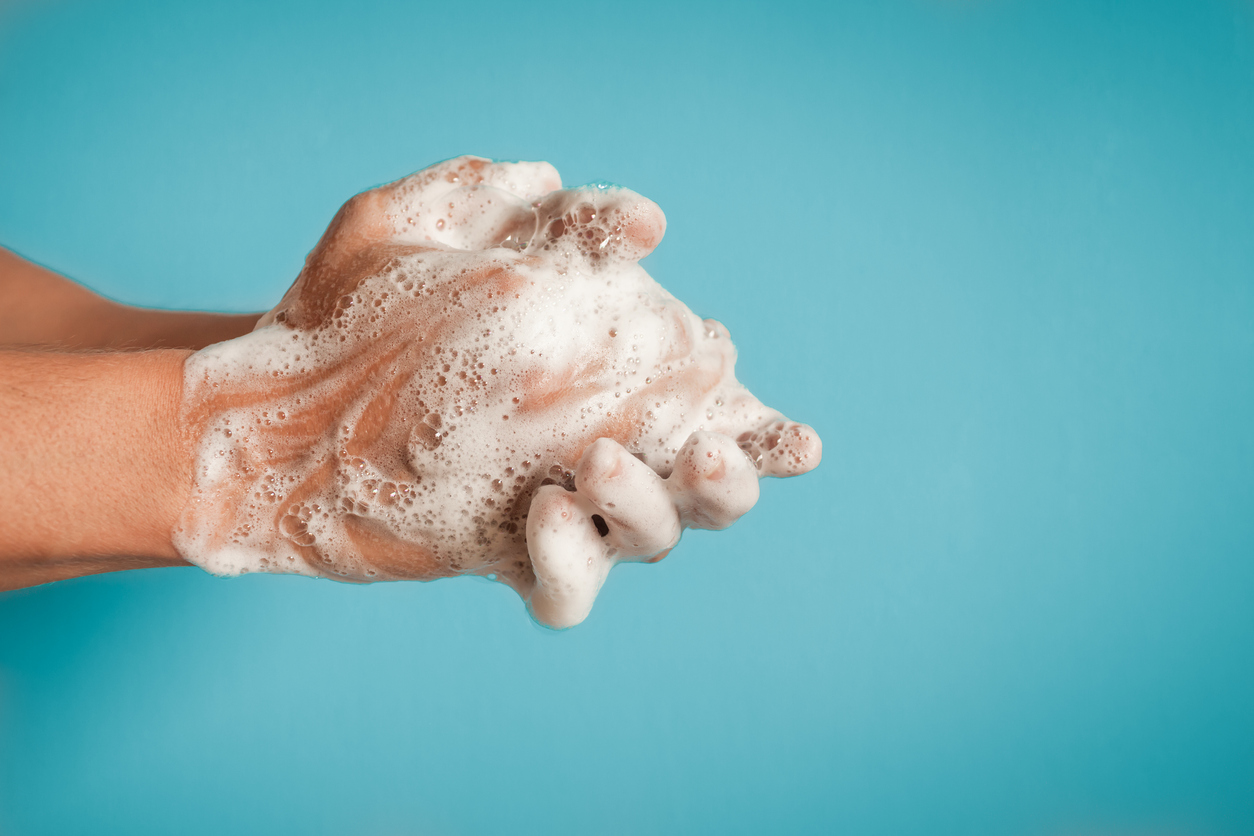As we enter peak cold season, new research has found the dreaded ‘commuter cold’ is real. Editor Anna Magee talks to leading GP Dr Ellie Cannon about exactly how to avoid the bugs in 2019
Most of us complain about our commuter journeys being the real reason we catch every cold going. But scientific research has never proven the dreaded ‘commuter cold’ – until now.
Fascinatingly, researchers at the University of Bristol have discovered higher rates of airborne flu-like infections in Londoners that have longer tube journeys and who pass through busier terminals.
The study, published in the December 2018 issue of Environmental Health, used Oyster card data to co-relate people’s Tube journeys throughout London with rates of flu-like illnesses in Londoners from Public Health England.
highest rates of cold and flu illnesses included Islington, Newham, Greenwich and Southwark Tube lines.
Boroughs with the highest rates of cold and flu illnesses included Islington, Newham, Greenwich and Southwark Tube lines. In fact, rates of infection in Islington for example, were found to be three times higher than those in Kensington and Chelsea.
On the other hand, lower rates of flu and cold-like illnesses were found in boroughs where the population doesn’t use public transport as the main form of commute to work, such as Richmond-Upon-Thames, Hounslow and Merton, as well as boroughs served by more Underground lines, such as Kensington and Chelsea, which according to the authors ‘guaranteed faster trips with less stops and contacts with fewer people’.
‘Higher rates of colds and flu can be observed in boroughs served by a small number of Underground lines,’ said Dr Lara Gosce, from the University of Bristol’s Civil Engineering department, who co-produced the research.
‘Passengers starting their journey in these boroughs usually have to change lines once or more in crowded junctions such as King’s Cross St Pancras in order to each their final destination.’
But other than moving to Kensington and Chelsea, how can we dodge germs and avoid picking up infections during peak season? We spoke to leading London GP Dr Ellie Cannon to find out.
#1 Don’t hug sick people
Seems a bit mean-spirited, especially in the festive season. But do you want to avoid a cold or not?
Different infections are spread in different ways, Dr Cannon asserts.
‘Some germs can live on surfaces so are spread by touching these. Others are borne in the air, so you catch them if someone breathes or sneezes near you.
‘For some infections, skin contact is needed. That means a hug may pass on an infection for some viruses, but not all.’ Be safe, don’t hug sick people.
#2 Wash your hands after every commute
‘Vast numbers of people who use the Tube transport systems are often jam-packed into close contact every day,’ says Dr Cannon.
‘It’s typical to be up close and personal with fellow commuters, touching the surfaces they have touched, which means there are plenty of opportunities to spread germs that may be lurking on surfaces or in the air.’
Contaminated surfaces such as hand rails on trains and Tubes are a typical source of germs, having been touched by hundreds of people each day – and who knows how often they are wiped clean.
‘This is why handwashing for children and adults is so vital,’ says Dr Cannon. ‘If that’s impractical, an alcohol gel is the next best thing, or wearing gloves.
‘Using a face mask may help prevent the spread of those viruses from the air when someone coughs or sneezes but not for those germs spread by surface contact.’
#3…and before you eat
The germs that cause colds and other winter ailments can live on hands and surfaces for up to 24 hours, making many places potential sources of infection outside your commute, including the gym and the office, Dr Cannon asserts.
Washing hands before eating is crucial to avoid contracting infections on contaminated surfaces you may have been touching between your meals.
Hygiene brand Dettol has just launched a campaign in schools called ‘Handy Helpers’ that aims to educate kids about good hygiene to help prevent the transmission of germs.
But new research from the brand suggests grown-ups may need it too. It found that while 70 per cent of Brits say hygiene is ‘very important’ to them, only 38 per cent washed their hands every time before eating.
‘We often use our hands to eat or touch food, and this is a typical way to pick up germs which go straight into your mouth’, says Dr Cannon. ‘Washing hands before you eat breaks this cycle.
‘Washing hands after being on public transport and as soon as you get to or home from school or work as well of course as after the bathroom is also crucial.’
#4 But do it properly
‘Most people get handwashing wrong because they under-estimate how much time should be spent on it – at least 20 seconds – and exactly how to do it properly,’ says Dr Cannon. It can help to use an antibacterial hand washing soap such as Dettol, she suggests.
Here’s how (according to the NHS):
- Wet your hands with warm water
- Apply enough soap to cover all over your hands with lather. You can use alcohol-based handrubs if you don’t have immediate access to soap and water
- Rub hands palm to palm
- Rub the back of your left hand with your right palm with interlaced fingers. Repeat with the other hand,
- Rub your palms together with fingers interlaced
- Rub the backs of your fingers against your palms with fingers interlocked
- Clasp your left thumb with your right hand and rub in rotation. Repeat with your left hand and right thumb
- Rube the tips of your fingers in the other palm in a circular motion, going backwards and forwards. Repeat with the other hand.
- Rinse hands with warm water
- Dry thoroughly, ideally with a disposable towel.
- Use the disposable towel to turn off the tap.
Phew – who would have thought there were so many steps to simply washing your hands?
#5 Stay home when you have symptoms
Ever heard someone claim, ‘I’m not contagious anymore,’ while they cough and splutter all over you? Don’t believe them.
‘With colds, you are most infectious while you have symptoms which may be a week or two,’ says Dr Cannon. ‘Obviously, if you are sneezing a lot, you are more prone to passing the infection on through air droplets and physical contact.’
‘All viruses and infections have different contagious periods and some infections may also be infectious before symptoms appear.’
The morale of that story? ‘People should ideally stay at home when they have symptoms,’ Dr Cannon advises. ‘This serves two purposes – firstly, the spread of infection is lessened. But also, it allows people to rest and therefore recover quicker.
#6 Use that tissue (but only once)
There’s a reason that public health ad screams ‘Catch it! Bin it! Kill it!’
‘This literally stops the spread of the viruses – rather than being sneezed into the air to others, germs are caught into a tissue and away in the bin, where no one will touch it or catch the germs,’ says Dr Cannon. It’s not always practical but it will help.
#7 Encourage a sick leave policy that respects germs
If your boss tut tuts when you stay home with ‘only’ a cold, show him/her this story.
And if you’re the boss, encourage a robust sick leave policy where people are allowed to take time off for simple viral infections without the need for a sick note, to save sharing infections with the whole team,’ Dr Cannon asserts.
Also, ensure there are plenty of opportunities in the workplace for handwashing and hygiene too, which could include antibacterial wipes available for phones, keyboards and mouses.
‘Flexible working when ill is also important, so people can work from home to avoid presenteeism and the spread of infection.’
More Healthista Content
Antiobiotic resistance – PLUS how to fix a cold fast without drugs
How to do reflexology for blocked sinuses and cold
7 signs it’s a common cold and you DON’T need antibiotics
10 cold prevention remedies proven by science
Like this article? Sign up to our newsletter to get more articles like this delivered straight to your inbox.
























































